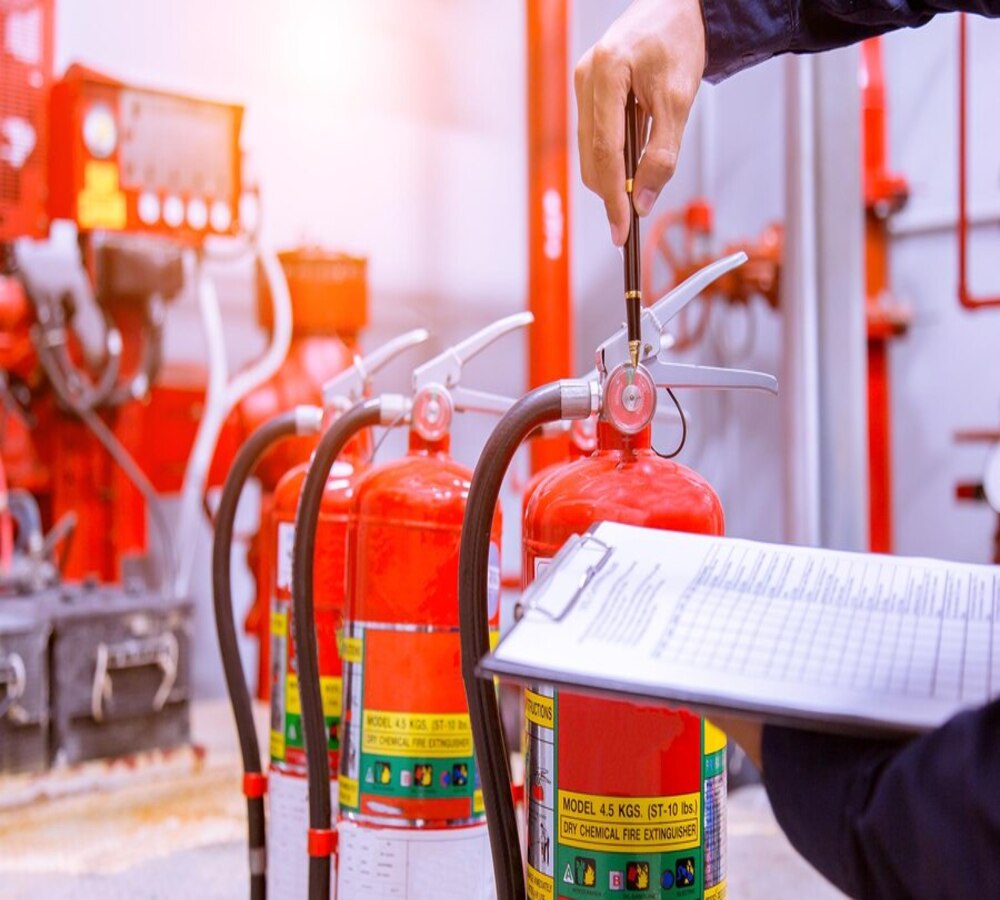
Fire Risk Assessments
Sadhana ITNET Security & Systems Pvt. Ltd. (SISSPL) is dedicated to providing robust Fire Security services, and our Fire Risk Assessment service is a fundamental component in ensuring the proactive identification and mitigation of fire-related risks. This service focuses on a comprehensive and systematic evaluation of a facility's fire hazards, vulnerabilities, and existing control measures. Here's a detailed overview of our Fire Risk Assessments service:
In-Depth Facility Inspection:
Our Fire Risk Assessment service begins with a thorough and systematic inspection of the facility. Trained assessors examine the physical layout, structural elements, occupancy patterns, and existing fire safety measures in place. This detailed examination serves as the foundation for identifying potential fire hazards and vulnerabilities specific to the facility.
Identification of Fire Hazards:
During the assessment, our team identifies and catalogues various fire hazards within the facility. This includes the presence of flammable materials, electrical equipment, potential ignition sources, and any other factors that could contribute to the initiation or spread of a fire. Recognizing and understanding these hazards is crucial for effective risk mitigation.
Assessment of Ignition Sources:
The assessment carefully evaluates potential ignition sources within the facility. This includes electrical equipment, heating systems, machinery, and any other sources that may pose a fire risk. Understanding the ignition sources allows for targeted control measures to prevent the accidental initiation of fires.
Evaluation of Combustible Materials:
The presence of combustible materials is a significant factor in fire risk. Our service assesses the types and quantities of combustible materials present, including storage methods and conditions. This evaluation informs strategies for minimizing the risk of fire spread and selecting appropriate fire suppression measures.
Occupancy Analysis:
Occupancy patterns and usage of spaces within the facility are critical considerations in fire risk assessment. The assessment analyzes the density of occupants, their mobility, and the potential for overcrowding during different times of the day. Understanding occupancy dynamics aids in developing effective evacuation plans and fire safety strategies.
Review of Fire Safety Systems:
Our team reviews the existing fire safety systems in place, including fire detection systems, alarm systems, and fire suppression measures. This evaluation assesses the operational efficiency, maintenance status, and compliance of these systems with relevant safety standards. Recommendations for improvements or upgrades may be provided based on the findings.
Emergency Exit and Evacuation Routes Assessment:
The assessment includes a thorough examination of emergency exits and evacuation routes. This involves ensuring that exits are properly marked, unobstructed, and easily accessible. The assessment also considers the capacity of evacuation routes to accommodate the expected number of occupants in a timely manner.
Inspection of Fire Protection Equipment:
Fire protection equipment such as fire extinguishers, hoses, and hydrants are essential components of a facility's fire safety measures. Our service inspects the condition, placement, and accessibility of these devices to ensure they are ready for use in the event of a fire. Recommendations for maintenance or replacements are provided as needed.
Analysis of Fire Prevention Measures:
Preventive measures play a crucial role in reducing fire risks. The assessment evaluates the effectiveness of fire prevention measures in place, including housekeeping practices, storage arrangements, and employee training programs. Recommendations for enhancing preventive measures are provided to reduce the likelihood of fire incidents.
Consideration of External Factors:
External factors, such as the proximity of neighboring structures, access for emergency services, and environmental conditions, are evaluated during the risk assessment. Understanding these external factors helps in formulating strategies that account for potential external influences on fire risks.
Vulnerability of Critical Infrastructure:
For facilities with critical infrastructure or sensitive areas, the assessment includes a focused evaluation of the vulnerability of these assets to fire. This may involve specialized measures to protect critical equipment, data centers, or other assets that are vital to the operation of the facility.
Compliance with Fire Safety Regulations:
Our Fire Risk Assessment service ensures compliance with local, national, and industry-specific fire safety regulations. This includes adherence to building codes, fire safety standards, and any legal requirements governing fire prevention and protection. Non-compliance issues are identified, and corrective actions are recommended.
Risk Scoring and Prioritization:
Each identified risk is assigned a risk score based on its likelihood and potential consequences. This risk scoring allows for the prioritization of risks, enabling organizations to focus on mitigating the most significant threats first. This risk-based approach ensures efficient allocation of resources for risk reduction.
Comprehensive Risk Mitigation Recommendations:
Following the assessment, our service provides comprehensive recommendations for mitigating identified fire risks. These recommendations may include structural modifications, enhanced fire protection systems, improved emergency response procedures, and training programs to address specific vulnerabilities and minimize overall risk.
Periodic Review and Continuous Improvement:
Recognizing that the risk landscape can evolve over time, our Fire Risk Assessment service emphasizes periodic reviews and continuous improvement. Regular reassessments ensure that the fire risk profile remains up-to-date and that mitigation measures evolve in response to changes in the facility, occupancy, or external factors.
In conclusion, Sadhana ITNET Security & Systems Pvt. Ltd.'s Fire Risk Assessment service is an essential element in establishing a proactive and effective fire safety strategy. By systematically identifying, evaluating, and prioritizing fire risks, organizations can implement targeted mitigation measures that enhance the overall safety of the facility. The comprehensive nature of our service provides organizations with the insights and strategies needed to create a resilient and adaptive fire safety framework, reducing the potential impact of fire incidents on people, property, and operations.